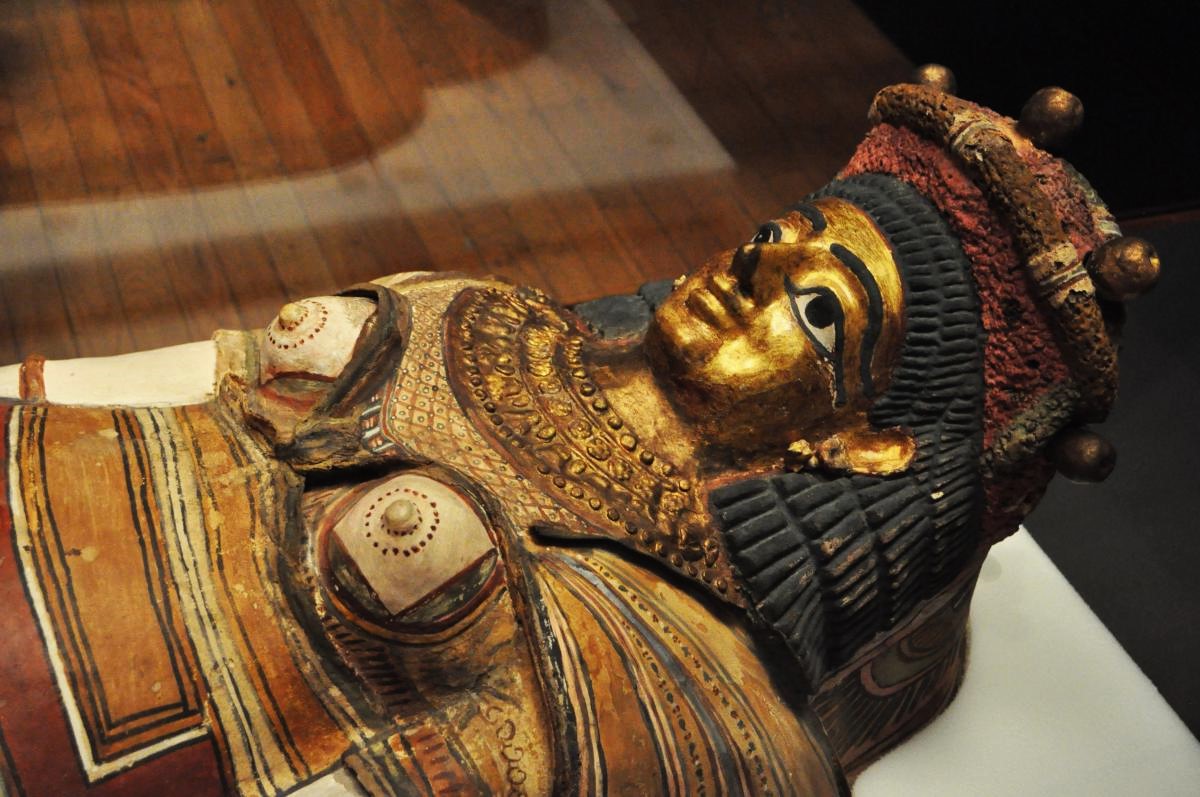
Ever heard of the Manchester Mummy? This ancient Egyptian mummy, discovered in the 19th century, has fascinated historians and archaeologists alike. Why is it so special? Unlike many other mummies, the Manchester Mummy underwent extensive scientific examination, revealing secrets about ancient Egyptian life, health, and burial practices. Did you know that this mummy was one of the first to be studied using X-ray technology? From its intricate wrappings to the artifacts found alongside it, the Manchester Mummy offers a unique glimpse into a world long gone. Ready to dive into 35 intriguing facts about this historical marvel? Let's get started!
Key Takeaways:
- The Manchester Mummy, also known as the "Mummy of Asru," offers a fascinating glimpse into ancient Egyptian life, mummification practices, and cultural significance.
- Asru's mummy, housed at the Manchester Museum, has sparked curiosity, inspired art and media, and continues to reveal new insights about ancient Egypt through modern research techniques.
The Manchester Mummy: An Ancient Enigma
The Manchester Mummy, also known as the "Mummy of Asru," has fascinated historians and archaeologists for decades. This ancient Egyptian mummy, housed at the Manchester Museum, offers a glimpse into the past. Here are some intriguing facts about this historical marvel.
-
The Manchester Mummy is believed to be over 2,800 years old, dating back to the 25th Dynasty of ancient Egypt.
-
Asru, the name given to the mummy, was a chantress in the temple of Amun at Karnak.
-
The mummy was discovered in the early 19th century and brought to England by a British collector.
-
Asru's mummy was unwrapped in 1825, revealing intricate linen bandages and amulets.
-
The Manchester Mummy is one of the best-preserved mummies from ancient Egypt, with many of her internal organs intact.
The Life and Times of Asru
Understanding the life of Asru provides context to her mummification and burial practices. Here are some facts about her life and the era she lived in.
-
Asru lived during a time when Egypt was under the rule of Nubian pharaohs.
-
She served as a chantress, a prestigious role that involved singing hymns and prayers to the gods.
-
Asru likely lived in Thebes, a major city in ancient Egypt known for its temples and tombs.
-
Her diet consisted mainly of bread, beer, and vegetables, typical of ancient Egyptian cuisine.
-
Asru suffered from several health issues, including arthritis and parasitic infections, as revealed by modern medical examinations.
Mummification Process and Techniques
The mummification process was a complex and sacred ritual in ancient Egypt. Here are some facts about how Asru was mummified.
-
The mummification process took about 70 days to complete.
-
Asru's internal organs were removed and placed in canopic jars, except for her heart, which was left inside her body.
-
Her body was dried using natron, a natural salt, to prevent decomposition.
-
The embalmers used resins and oils to preserve her skin and tissues.
-
Asru's body was wrapped in multiple layers of linen bandages, with amulets placed between the layers for protection.
The Journey to Manchester
The journey of Asru's mummy from Egypt to Manchester is a story of exploration and curiosity. Here are some facts about how she ended up in England.
-
Asru's mummy was discovered in a tomb in Thebes by Giovanni Belzoni, an Italian explorer.
-
The mummy was transported to England in the early 19th century, a time when Egyptian artifacts were highly sought after.
-
Asru's mummy was initially part of a private collection before being donated to the Manchester Museum.
-
The Manchester Museum has housed the mummy since 1825, making it one of the oldest exhibits in the museum.
-
The museum has conducted extensive research on the mummy, using modern technology to learn more about her life and death.
Modern Research and Discoveries
Advancements in technology have allowed researchers to uncover new information about Asru and her time. Here are some recent discoveries.
-
CT scans have revealed detailed images of Asru's internal structures, providing insights into her health and mummification.
-
DNA analysis has shown that Asru had a genetic predisposition to certain diseases, such as arthritis.
-
Isotope analysis of her hair and teeth has provided information about her diet and geographic origins.
-
Researchers have identified traces of ancient Egyptian cosmetics on Asru's skin, indicating she used makeup.
-
The study of Asru's amulets has revealed their symbolic meanings and protective purposes.
Cultural Significance and Legacy
Asru's mummy holds significant cultural and historical value. Here are some facts about her legacy and impact.
-
The Manchester Mummy has been featured in numerous exhibitions and documentaries, highlighting its importance.
-
Asru's mummy has contributed to our understanding of ancient Egyptian burial practices and beliefs.
-
The study of Asru has provided valuable information about the health and lifestyle of ancient Egyptians.
-
The Manchester Museum has used Asru's mummy to educate the public about ancient Egypt and mummification.
-
Asru's mummy has inspired artists, writers, and filmmakers, becoming a symbol of ancient Egyptian culture.
Fun Facts and Trivia
Here are some fun and lesser-known facts about the Manchester Mummy that might surprise you.
-
Asru's mummy was once believed to be cursed, a common myth associated with Egyptian mummies.
-
The Manchester Mummy has been the subject of several paranormal investigations, with some claiming to have experienced strange occurrences.
-
Asru's mummy has been featured in popular culture, including books, movies, and TV shows.
-
The Manchester Museum offers virtual tours of Asru's mummy, allowing people worldwide to explore this ancient artifact.
-
Asru's mummy continues to be a source of fascination and research, with new discoveries being made regularly.
The Final Word on the Manchester Mummy
The Manchester Mummy offers a fascinating glimpse into ancient Egyptian culture and modern science. This mummy, discovered in the 19th century, has been a subject of intense study. Researchers have used advanced techniques like CT scans and DNA analysis to uncover details about her life and death. These findings have provided valuable insights into ancient medical practices, diet, and even social status.
The Manchester Mummy isn't just a relic; she’s a bridge connecting us to a distant past. Her story continues to evolve as new technologies emerge, promising even more discoveries. Whether you're a history buff or a science enthusiast, the Manchester Mummy has something to offer. She reminds us that every artifact has a story waiting to be told, enriching our understanding of human history.
Frequently Asked Questions
Was this page helpful?
Our commitment to delivering trustworthy and engaging content is at the heart of what we do. Each fact on our site is contributed by real users like you, bringing a wealth of diverse insights and information. To ensure the highest standards of accuracy and reliability, our dedicated editors meticulously review each submission. This process guarantees that the facts we share are not only fascinating but also credible. Trust in our commitment to quality and authenticity as you explore and learn with us.


